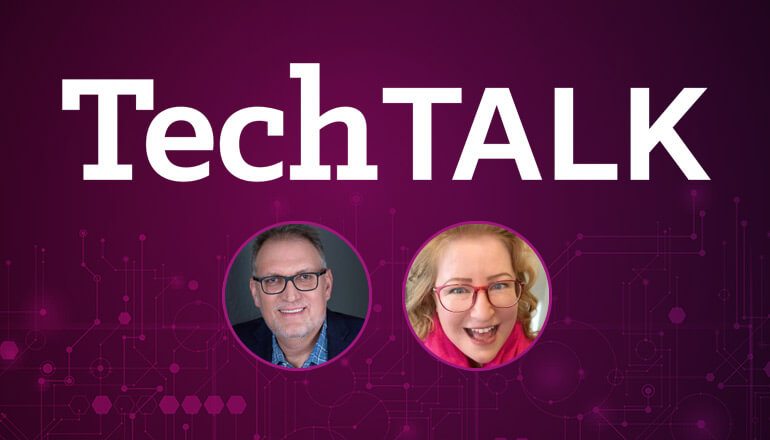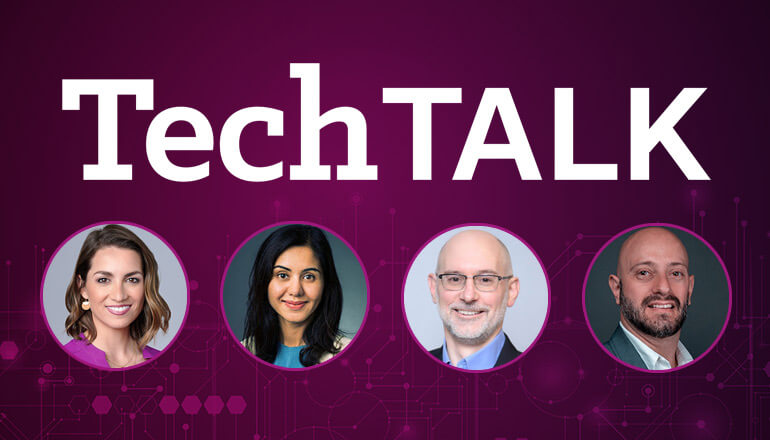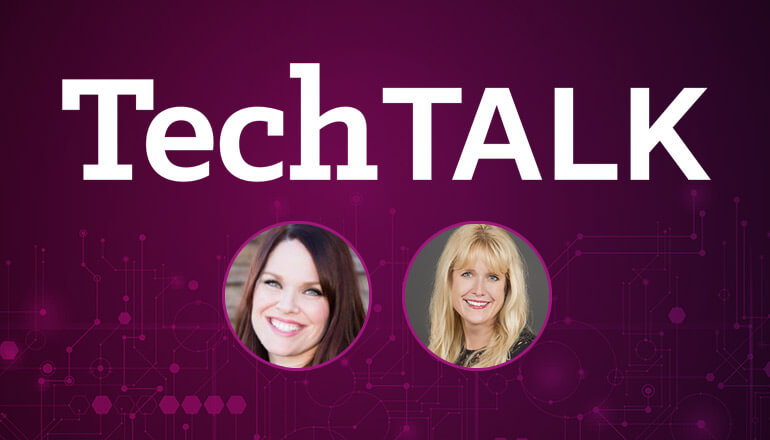Audio transcript:
Computer Vision Across Industries (Part 2)
Published March 23, 2021
BEN
Hello, everyone, and welcome to today's Tech Talk, computer vision across industries. I'm your host, Ben Kotvis, Chief Architect of IOT. And joining me today are my colleagues, Amol Ajgaonkar, CTO of Intelligent Edge, and Ken Seier, Insights National Practice Lead for Data and AI.
Thank you both for being here once again.
KEN
Thank you for having us, Ben.
BEN
This is part two of our three-part series on computer vision. Last week, we've talked broadly about some of the benefits, considerations, and even misconceptions surrounding this technology. Today, we're going to take a look at some of the innovative ways different organizations are putting computer vision to work in their businesses. So, to kick things off, I'd like to ask each of you to share your most interesting use case for computer vision that you've either worked on directly, or maybe that you've just heard about recently.
Ken, we'll start with you.
KEN
Sure, so recently, we've been doing a lot of work with computer vision in asset inspection in the field. We've worked with railroads, power generation companies, utility companies to analyze linear assets, be it track, be it lines, be it pipe, using computer vision mounted on drones or mounted on vehicles in order to scan large, many, many miles of linear asset and then to detect defects in real time. It's been an exciting extension of their human workforce and has dramatically increased the inspection frequency as well as potentially increase the safety, not only of the inspectors, but also of the transit using those assets.
BEN
How about you, Amol?
AMOL
There was an interesting use case that came across where drones were being used to analyze the blades of the wind turbine and the model was actually running on the drone itself. So as the drone moved across the blades of the turbine, it would detect any inconsistencies, any cracks in the blade. And if it did, then it would actually kick in and do a full-scale scanning of the blades, right? With higher resolution. I think it was a great use case because one, the drone made the decision that itself to do the full-scale scanning if it found an issue with the blade, which meant that the drone didn't have to land, some to take a look at it and then decide, oh, I need to go back to the wind turbine now and do a full scan.
So, it saved money for the operator to go back and forth. And secondly, it was much safer, right? The wind turbines are huge. So being able to do that remotely, standing on the ground and being able to do that, analyze it, and then go back knowing that it's been done right, I think was a great use case for this.
BEN
Those are really interesting use cases. So last week, we mentioned safety as a key driver for computer vision. Can you give us some other examples of how it might keep workers safe in industrial environments, Amol?
AMOL
Yeah, absolutely. Some of the use cases especially in the manufacturing sector where we've got heavy equipment and it is dangerous to be around that equipment when it starts up, right? It could be a hydraulic press or any of the crane itself. And as it moves, we don't want people to be in the way. So, I think it's a great use case to use computer vision to analyze and detect humans around. And then if you integrate that into the existing systems, whether it's a PLC or any other systems that they might already have or other sensors, you can actually take that information and decide when you need to analyze the footage, right? When you need to detect and alert people that they're in the danger zone and they need to move out of it, identify if they have, wearing hard hats and vests for compliance. So especially in the manufacturing sector, I think it's a great, great, great use case, yeah.
BEN
Any safety examples from you, Ken?
KEN
Sure, we're doing some work right now with a steel recycler. They're taking in a recycled steel and melting it down in order to create new steel ingots, that recycled steel can have dangerous items in it. I'm thinking specifically things like propane canisters which might be incompletely discharged. So, they have a human process right now to look for those as they are bringing the steel in from the yard. What we've done is we've mounted AI in fixed cameras in the yard, as well as on the actual scrap crane so that as they're bringing that in to get melted down, those AI models are attempting to identify dangerous products like dangerous items like those propane canisters and are alerting the operators in real time to enhance their safety. This is a really important case for safety. A single propane canister can be devastating, so really excited about the potential to augment human safety there.
BEN
Thanks, Ken. We'll stay with you for a second here. What about in other aspects of manufacturing and production, how's computer vision being applied to things like quality control?
KEN
Sure, so the fact that computer vision is kind of tireless whereas human operators aren't, and the fact that a high-definition video, as well as high-speed video can exceed human capabilities. All along the assembly line, we're being able to implement computer vision models that can detect defects in real time. They can alert the human operators in line's, SMEs. They can reduce scrap, in some cases, by up to 30% and also allow those SMEs to re-tune in the line in order to eliminate that scrap completely preventing additional losses in downstream assembly, labor, and QC
BEN
Amol?
AMOL
I'll tag on to the assembly line example where having cameras installed on the assembly lines to detect different types of brands and what product is coming through, analyzing the size of that product. And if it matches with what it is supposed to be, integrating with the PLCs to understand what is supposed to be on that assembly line. And am I seeing the same thing on that assembly line, right? So, that correlation between what the system expects and what in reality is on that assembly line becomes really important, plus some of the manufacturing facilities have these automated conveyor belts. So, you can hook into those. And as you find an anomaly, you can just redirect them to a different conveyor belt, which is super important so that humans don't have to stand there and move those products aside manually, that can be just done through the process automation itself and then humans using their skills and expertise can then look at the error products or the anomalies and really check if there was an anomaly or if it was fine, right? So now they're focused on just a smaller set of errors rather than looking at every product that comes out of that assembly line.
BEN
So once these products hit the shelves, are there applications for computer vision in a retail environment, Amol?
AMOL
Well, absolutely. You look at inventory or back housing cycle counts that retail employees have to do. And it is time-consuming to walk through the warehouse and count how many pallets you have, what type of products you have. So instead of using either a drone flying through those aisles or having cameras mounted already, or even having a robot going through those aisles with a camera attached and taking pictures of the pallets and then analyzing the pallets to say, oh yeah, you have X type of product, you have these number of boxes of this type of product. I think that just automates the entire process, and while doing that, the retail or the customer gets real time or near real time, or essentially, they can run that process whenever they want and get counts of what's there in the warehouse.
BEN
That's really interesting. I think most people have probably heard some of the research that's been done around using computer vision to screen for early indicators of things like cancer or heart disease. Ken, is this the primary use case for computer vision in healthcare?
KEN
So, computer vision in medical diagnostics has huge potential, but it has a high impact on humans who are receiving that care. And we want to be very responsible about how we implement it. No computer vision model is 100%, it cannot be relied on to make 100% accurate predictions. So, we don't want to replace the human subject matter experts. What we want to do is augment them with that computer vision to help them make better decisions for their patients, but always leave the care in the hands of the medical professionals.
But there are a lot of lower risk opportunities to improve healthcare outcomes and reduce costs in healthcare. We can use computer vision to process incoming paperwork using OCR in order to reduce processing time and effort. We do that in the claims management process, in invoicing and accounts receivable. We can assist in rapid inventory of surgical closets or medical supply using inventory models, or even provide a reminder if a care provider has come into a room but forgotten to wash their hands. These are great low risk interventions and augments that we can make in order to help the clinicians make better decisions and reduce overall healthcare costs.
BEN
We've covered a fair number of industries today, energy, manufacturing, healthcare. Amol, are you seeing any other industries where we see computer vision really taking off in the future?
AMOL
I think anywhere, there is an opportunity to increase safety, quality, efficiency, or customer satisfaction. I think there's a play for computer vision. The important thing to remember is that we are augmenting the value that the human workforce is bringing. We're trying to automate wherever you have the same repeated tasks so that the human workforce can focus and assist with the really important task at hand and not at the mundane stuff that is repeatable, right? So, in that way, essentially, it applies to many industries, wherever there are humans involved and wherever there's a repeatable task, I think computer vision can be helpful there.
BEN
Ken?
KEN
Sure, like Amol said, anywhere where there's safety, quality, efficiency, or customer satisfaction, improvements that can be found, computer vision is a great opportunity. We've done work in agriculture, home safety, logistics, transportation, operations, and a variety of other industries where computer vision has really enhanced either that customer experience or the decision-making capabilities of the workforce.
BEN
Well, thank you both again for joining me this week and sharing your expertise. In the next and final part of the series, we'll discuss what it takes to develop, implement, and scale these types of projects for maximum business value. I look forward to talking with you then.
KEN
Thank you, Ben.
AMOL
Thanks, Ben.
[Music]










